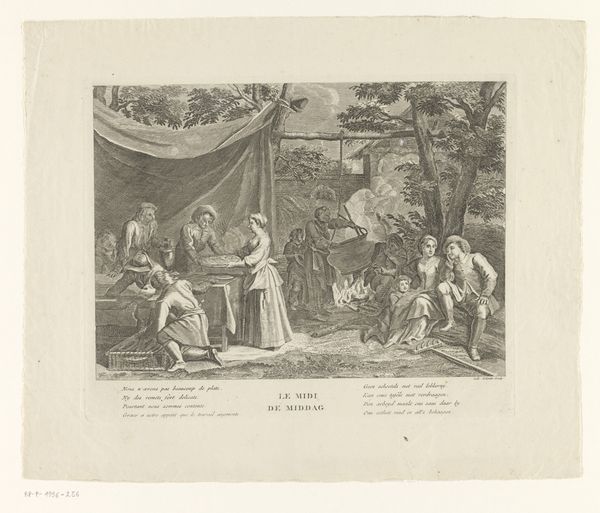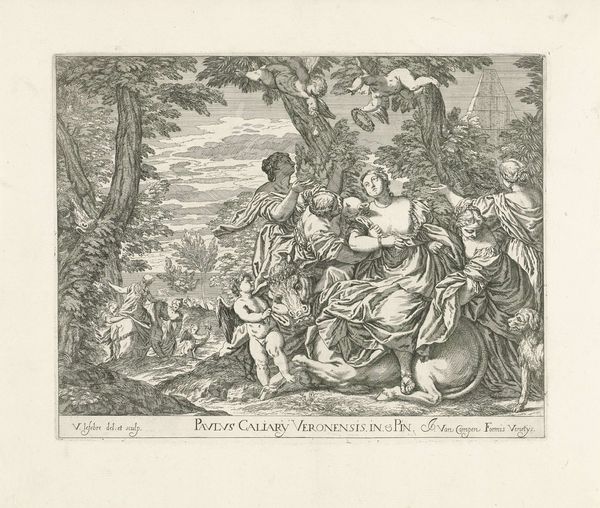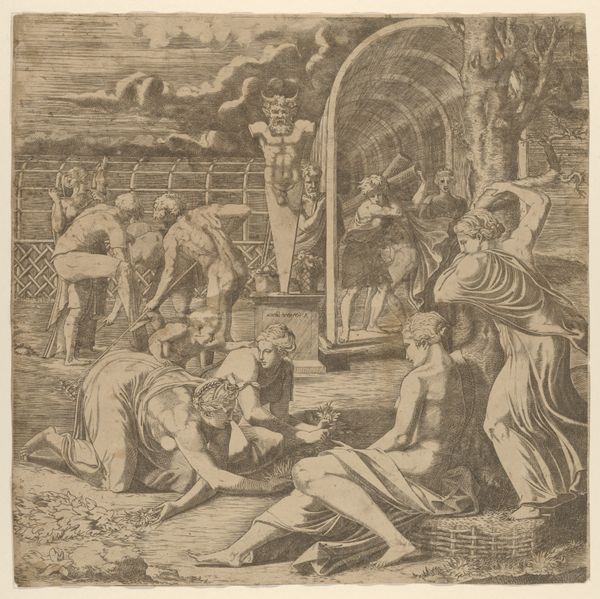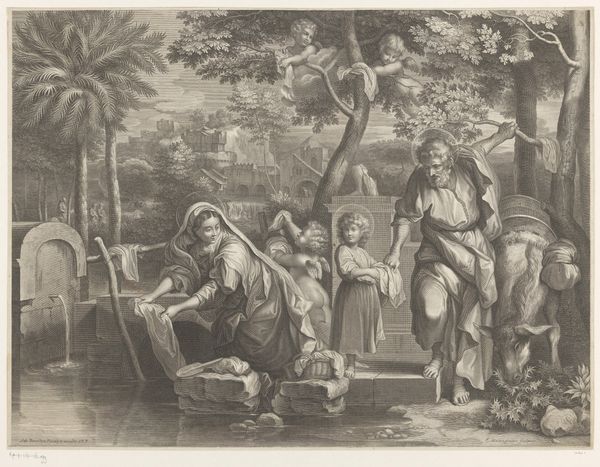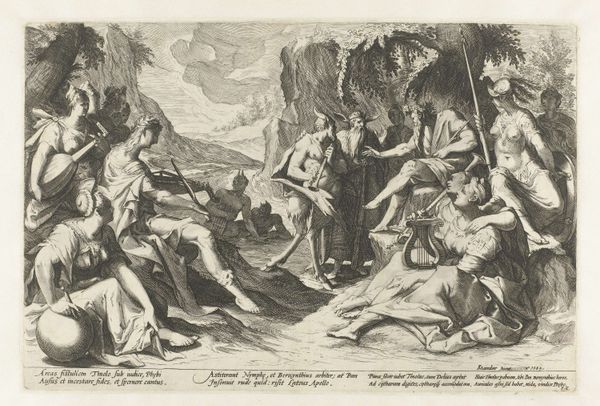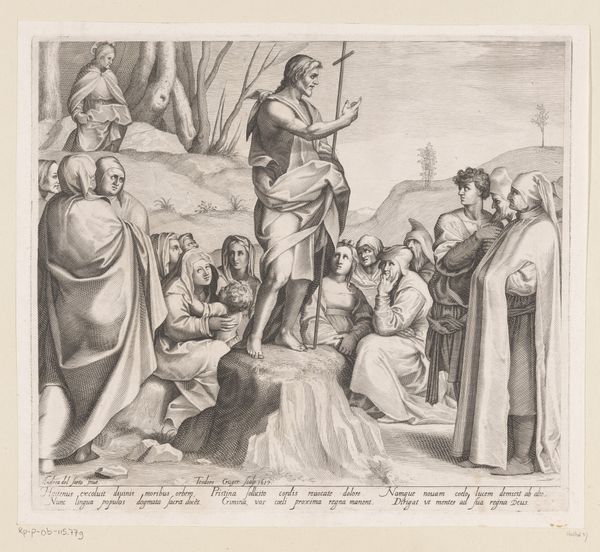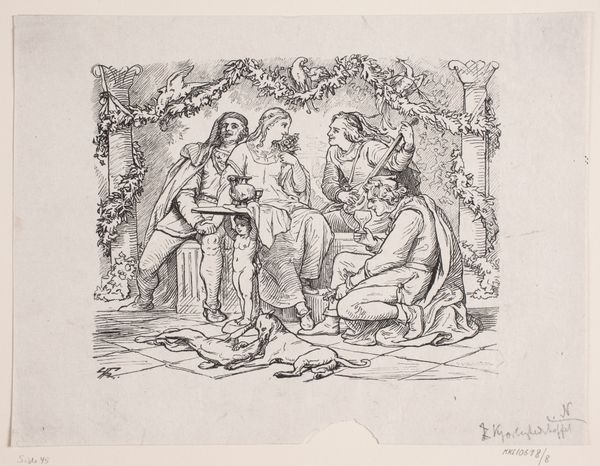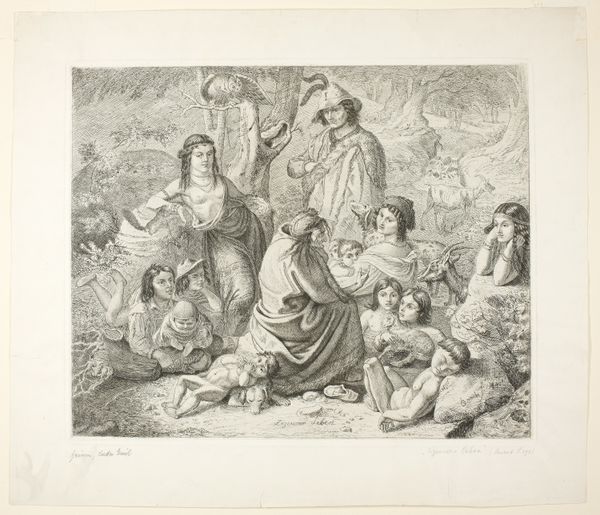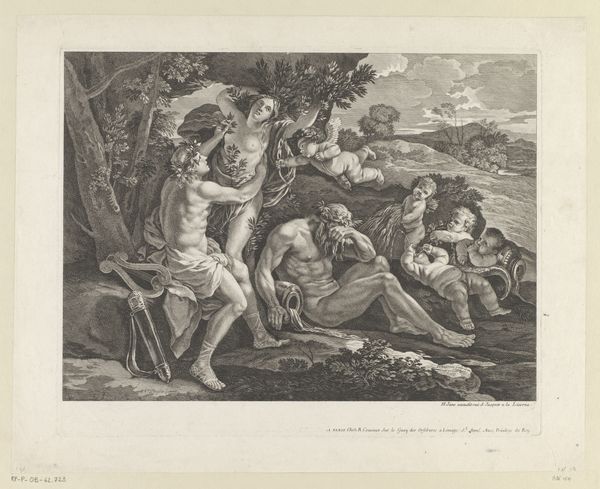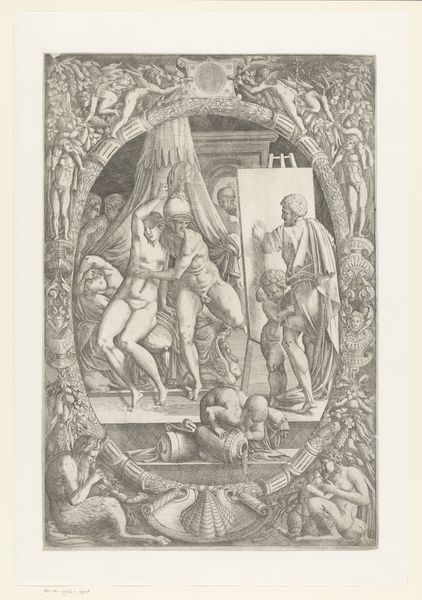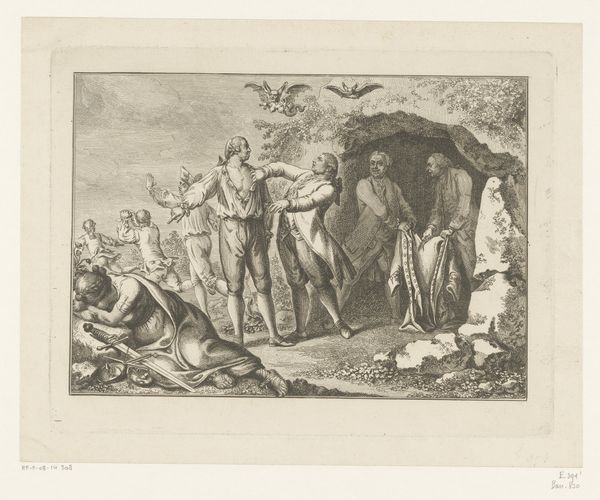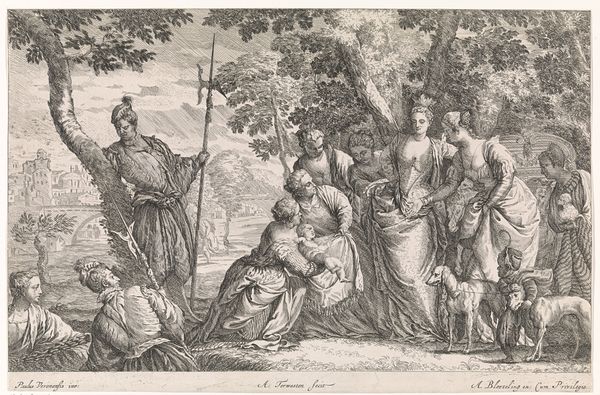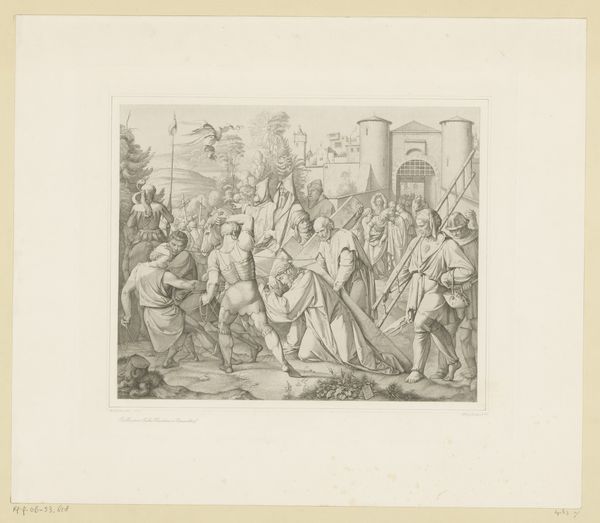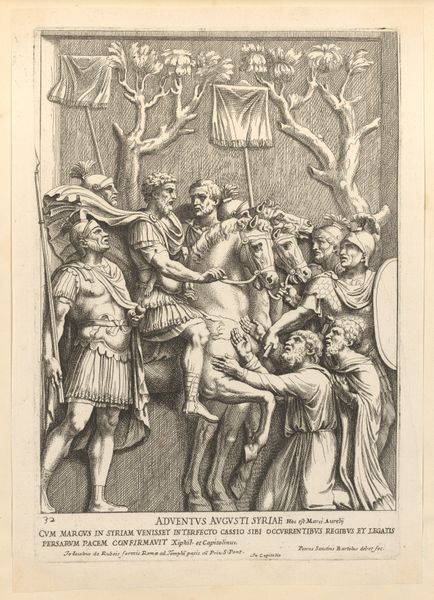
The Praise of the Good Upbringing of Children Possibly 1859 - 1860
0:00
0:00
Dimensions: 8 3/4 x 10 1/4 in. (22.23 x 26.04 cm) (image)10 1/2 x 12 7/8 in. (26.67 x 32.7 cm) (sheet)
Copyright: Public Domain
Curator: Julius Schnorr von Carolsfeld created this woodcut, "The Praise of the Good Upbringing of Children," likely between 1859 and 1860. It resides here at the Minneapolis Institute of Art. Editor: It strikes me as stark. That detailed linework gives it a rather...unyielding quality. A rigid kind of grace, if that makes any sense. Curator: I see what you mean. Carolsfeld was working in a period where didactic art – art intended to teach – was highly valued. Prints like these circulated widely, influencing public morality and familial roles. Editor: A woodcut, of course, means the image had to be meticulously carved into the wood block itself, a labor-intensive process for potentially mass production. The distribution being a major value of this type of work. Do you think the message impacted reception more than aesthetic quality? Curator: It's hard to separate the two. The composition, the idealized figures, all reinforce the idea of a harmonious family instructed by wisdom. It’s propaganda, of sorts, for bourgeois values of the time, using a visually appealing scene to push particular ideals. The gate the man leans on appears to physically keep others outside the circle of the blessed family. Editor: I’m drawn to the contrast in texture – the smooth faces of the children against the heavily worked drapery. This carving work involved many specialized craftsmen in workshops which also served a great function in culture, particularly within Germany. What are your thoughts on the anachronistic, almost medieval costuming? Curator: The nod to the medieval past would have been intentional, lending a sense of timeless authority to the scene. Recall the rise of German nationalism during this period. By referencing the art of the past, Carolsfeld connected his message to a broader historical narrative, emphasizing tradition. It is possible there are Christian or biblical references being invoked here as well. Editor: Yes, it becomes another layer of legitimacy, another attempt to assert the importance of those values. Overall, I appreciate its technical execution within that landscape of artisan and workshop labour. Curator: Exactly. Studying the context enriches our experience and knowledge of even a piece as seemingly straightforward as this one. Editor: Definitely something to consider while walking the halls and looking at the vast arrangements of printed materials here at the MIA.
Comments
No comments
Be the first to comment and join the conversation on the ultimate creative platform.
